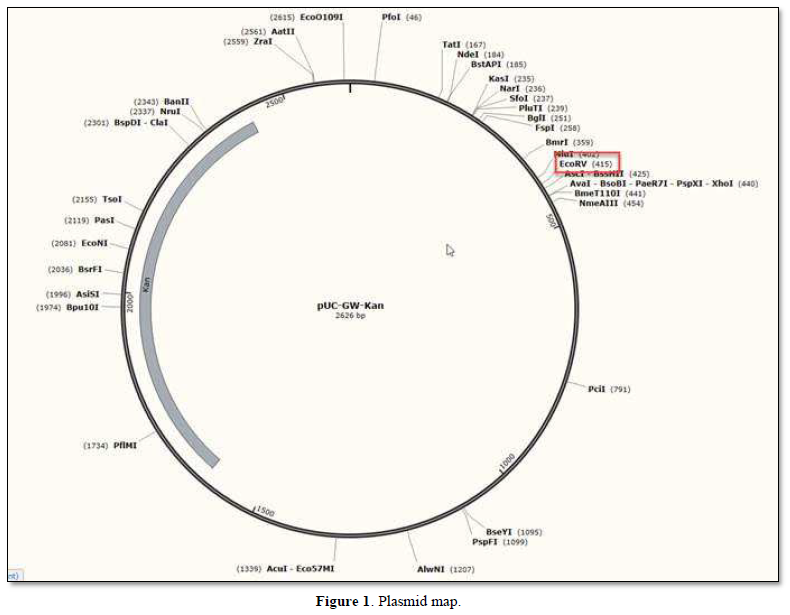Commentary
Ophuirid Ophiocomina Nigra HLA-E Gene Synthesis in PUC-GW-KAN Plasmid or HLA-E Echinodermata Gene Biosynthesis «De Novo» in E.Coli Sensu Lato Plasmid
3296
Views & Citations2296
Likes & Shares
HLA-E (Class 1) is an MHC gene which has been isolated in 2020, in our laboratory. We show now its biosynthesis «de novo» in a PUC-GW-KAN plasmid. Such experiment was performed with the Ophiocomina nigra IGKappa gene one year ago.
INTRODUCTION
We have isolated recently MHC genes in Echinodermata [1] in 3 classes: the Ophuirids, the Crinoïds, the Asterids. At that time, we decided to synthetize one of these genes: the well-known HLA-E one in a PUC-GW-KAN plasmid (Yan Li gift).
METHODS
We operate according the following method [2]. It was resumed in 4 parts:
- Synthesis of oligonucleotides with overlapping segments in sense and antisense direction
- Assembly of the oligonucleotides into a double stranded DNA, using a poly chain assembly method (PCA).
- For larger constructs, the sequence is split into smaller, intermediate fragments, to facilitate synthesis. Once the intermediated fragments have been obtained with correct sequence, they are assembled into the full-length sequence.
- Cloning into the linearized vector by either recombination or ligation-based cloning, mostly performed within the same step as full-length sequence assembly.
Regarding the restriction site, which was used for cloning, construct was cloned into vector pUC-GW by using the unique EcoRV restriction site. Please find table below for the primers used for sequencing (Table 1).


RESULTS
- Plasmid map
The construct appears below (Figure 1):
- Recalling of Original sequence in 5’-3’:
TGTAATCCCAGCACTTTGGGAGGCCGAGGCGGGCGGATCACGAGGTCAGGAGATCGAGACCATCCTGGCTAACACAGTGAAACCCCGTCTCTACTAAAAATACAAAAAATTAGCCGGGCGTGGTGGCGGGCGCCTGTAGTCCCAGCTACTCGGGAGGCTGAGGCAGGAGAATGGCGTGAACCCGGGAGGCGGAGCTTGCAGTGAGCCGAGATCGCGCCACTGCACTCCAGCCTGGGCGACAGAGCGAGACTCTGTCTCAAAAAAAAAAAAAAAAAAAAAAA
- Synthetized sequence in 5’-3’:
- Blastn original sequence/ synthetized sequence
The Table 2 resumes mainly the identities and the e-value between these 2 precedent sequences. Chromatograms were also performed.




CONCLUSION
We conclude our experiment is valid when compared to Table 2. Furthermore, we assert, it is the first time such discovery:
- MHC Genes in Echinodermata (Invertebrates) were found
- biosynthesis of HLA-E Echinodermata gene in a PUC-GW-KAN plasmid was performed.
- Leclerc M (2020) Evidence of MHC Class I and Class II Genes in Echinodermata. Proteomics Bioinformatics 2(1): 59-61.
- Leclerc M (2021) Biosynthesis « De Novo » of the Ophuirid Ophiocomina Nigra Igkappa Gene. J Clin Class Immunol 1(1).



